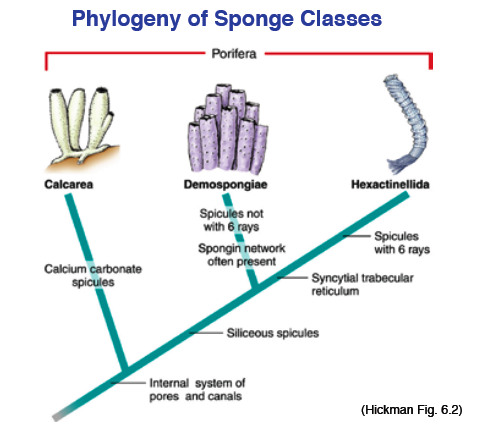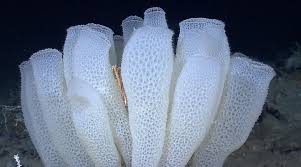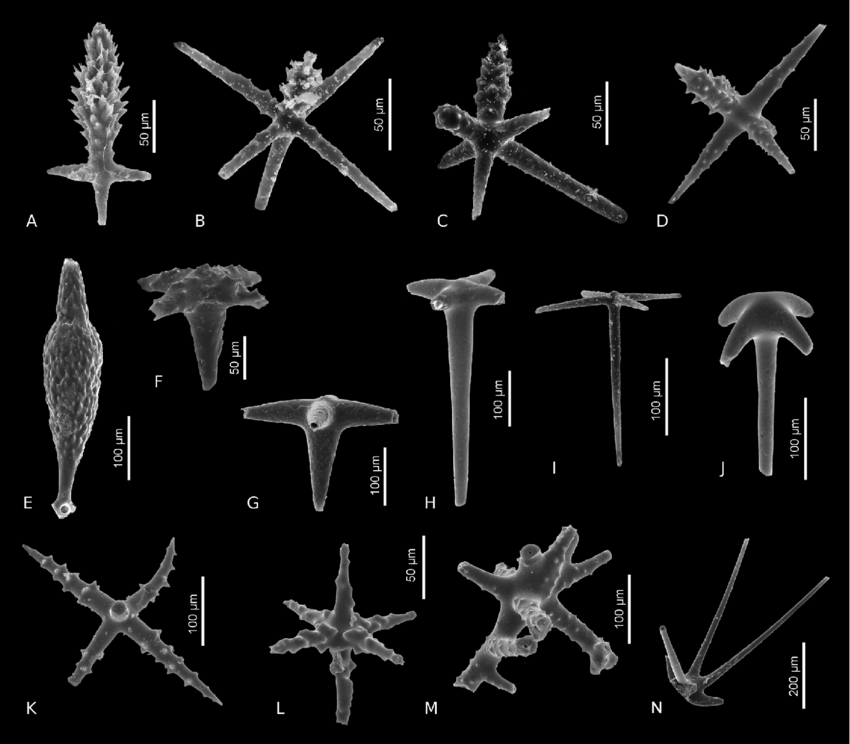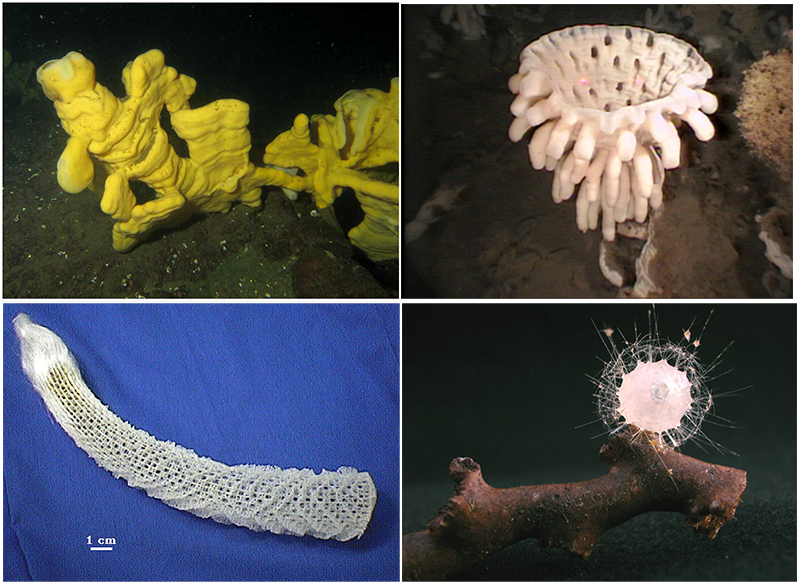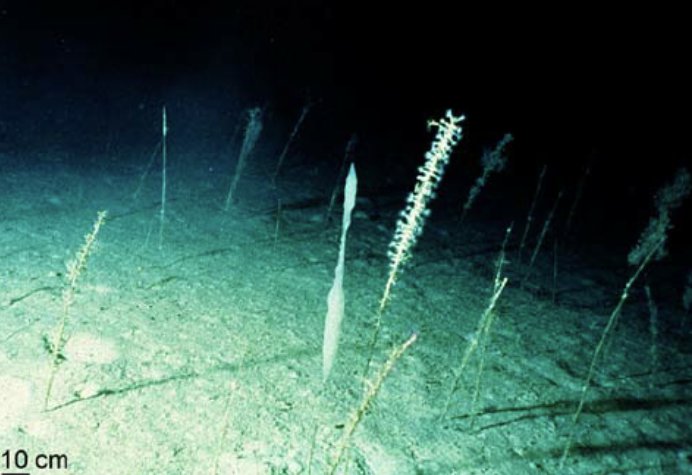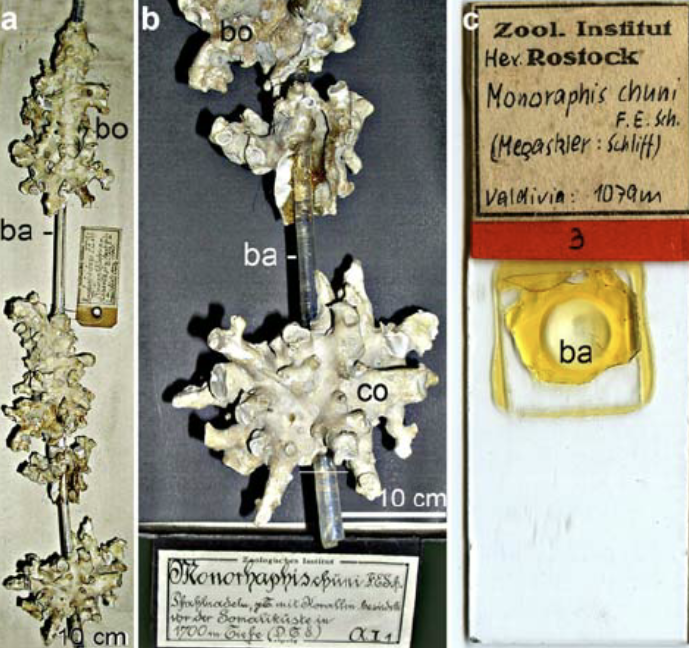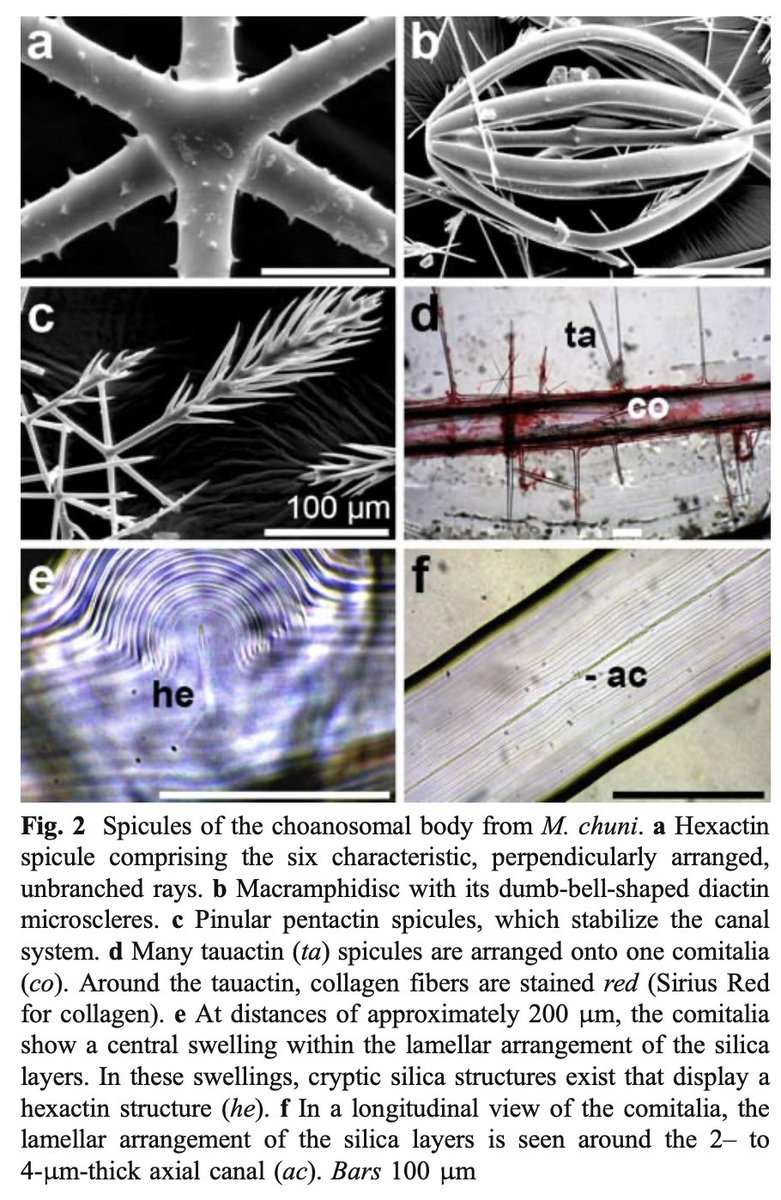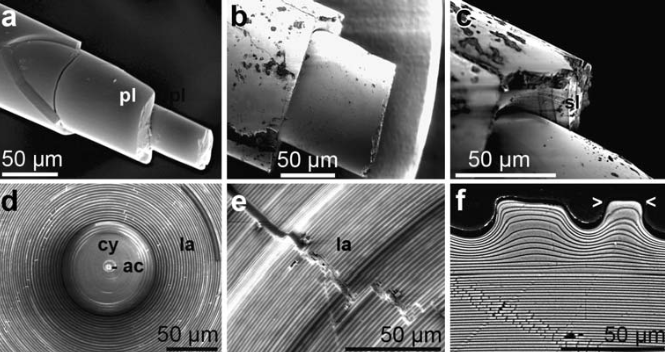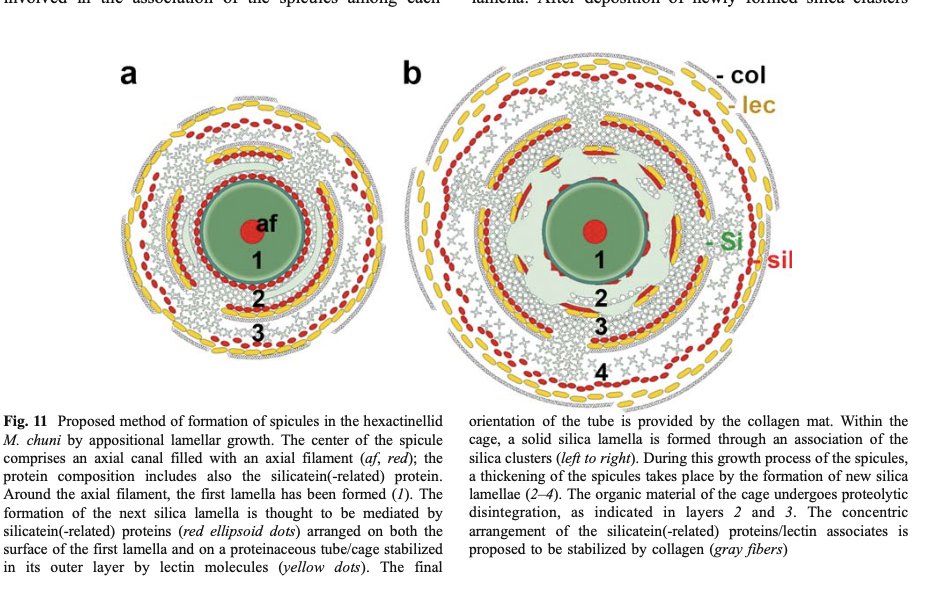The phylum Porifera (sponges; “pore bearing) is divided into three classes, Hexactinellida, Demospongiae, and Calcarea. Calcarea 2/n
The Hexactinellids (glass sponges) of which I will focus on, are predominately a deep sea group. They are the oldest of the groups originating about 585-720 million years ago during the Snowball Earth period. 3/n
During this time, soluble calcium carbonate and silica were formed by reaction with atmospheric carbon dioxide. These reactions provided silicic acid in seawater-the necessary starting material for siliceous spicules. 4/n
In marine environments, silica concentrations are relatively low, thus the need to augment the process with enzymes. Sponges are unique in that silica deposition is mediated by an enzyme (silicatein). 5/n
Interestingly, other organism like diatoms do not enzymatically bolster the process. Spicule formation begins within the cell and extruded when it becomes to large (6-8 micrometers). 6/n Photo from https://www.researchgate.net/figure/Spicules-of-sponges-of-Hexactinellida-A-D-Different-types-of-dermal-pinnular-hexactines_fig33_272087213
I mention this because, in the deep sea the higher concentrations of of silica/silicon allow for formation of larger sponges (i.e. if you are a sponge the deep sea is a good life). 7/n
Within the Hexactinellids, one deep-sea species produces spicules over 3m (9.8ft) in length, making them the largest biosilica structures on earth. 8/n
Meet Monoraphis chuni! #SpongeThursday Photos all from Muller et al. https://www.researchgate.net/publication/6414854_Formation_of_giant_spicules_in_the_deep-sea_hexactinellid_Monorhaphis_chuni_Schulze_1904_Electron-microscopic_and_biochemical_studies 9/n
Monorhapis chuni was described by Schulze in 1904 based on specimens collected during the first German deep-sea expedition on the RV Valdivia. Little information had been added to Schulze’s original description...Until 2007 10/n
Muller et al. 2007 report that M. chuni produces an ‘anchoring’ spicule that can reach 3m with a maximum diameter of 8.5mm (1/3 inch) with silica laid down in concentric rings. 11/n
The tall stalk allows the sponge to ‘reach’ into the water column where flows are higher, better for a filter feeder. 12/n
The creation of that giant spicule is not a simple process. The process occurs through successive deposition of layers (lamella, layers 2-4 show subsequent growth). 15/n
The center of the spicule contains a filament (af in figure before) around which the first lamella formed. 16/n

 Read on Twitter
Read on Twitter
